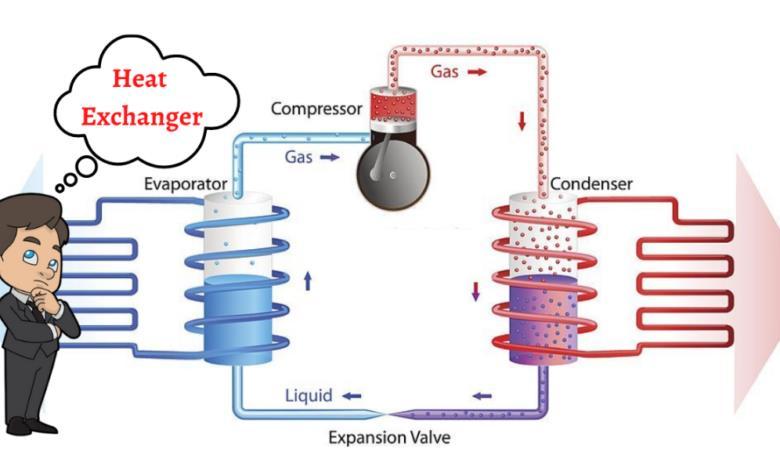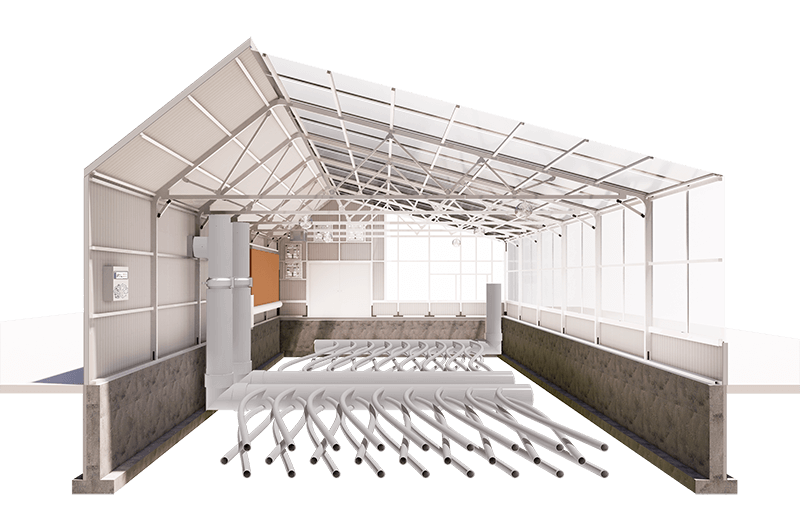The Role of DVS Heat Transfer Systems in Revolutionizing Liquid Cooling for EV Batteries
A Comprehensive Guide to Picking the Right Heat Transfer Solutions for Your Needs
Selecting the suitable Heat transfer system is crucial for operational efficiency. Numerous systems provide to various demands, affected by aspects such as temperature variety and liquid kind. Understanding the concepts behind Heat transfer, such as convection, conduction, and radiation, is crucial. Furthermore, assessing power sources and maintenance methods can affect lasting performance. A closer evaluation of these considerations exposes just how to customize a system to details demands. What should one prioritize in this facility decision-making procedure?
Understanding Heat Transfer: Trick Concepts and Concepts
Although Heat transfer might feel like a simple concept, it includes a series of concepts that are fundamental for efficient system layout. Understanding these concepts is essential for engineers and designers that intend to maximize thermal performance in different applications. Transmission, for example, entails the transfer of Heat via strong materials, while convection refers to the movement of Heat within fluids. Radiation, one more vital concept, defines exactly how Heat can be moved with electro-magnetic waves. Each of these systems plays a crucial function in determining exactly how energy relocates within a system. By thoroughly realizing these ideas, specialists can make enlightened choices, ensuring that Heat transfer systems operate efficiently and fulfill the specific needs of their applications
Kinds Of Heat Transfer Systems: An Introduction
Understanding the principles of Heat transfer prepares for discovering the numerous sorts of Heat transfer systems available. Heat transfer systems can be classified primarily into three kinds: transmission, radiation, and convection. Conduction includes Heat transfer through strong materials, relying upon direct call in between particles. Convection, on the various other hand, happens in liquids (gases and liquids) where the activity of the liquid itself facilitates Heat transfer. Radiation entails the transfer of Heat via electromagnetic waves and does not need a tool, permitting it to happen in a vacuum. Each kind of system has unique characteristics and applications, making it crucial for individuals and organizations to meticulously examine their details demands when selecting one of the most suitable Heat transfer remedy.
Applications of Heat Transfer Solutions in Different Industries
Heat transfer systems play a vital function throughout numerous industries, affecting effectiveness and item high quality. In industrial production processes, they help with accurate temperature control, while in food and drink processing, they guarantee safety and security and conservation. In addition, heating and cooling and environment control systems rely greatly on effective Heat transfer to keep comfortable atmospheres.
Industrial Production Processes

Many commercial manufacturing procedures depend heavily on reliable Heat transfer systems to maximize performance and improve product high quality. In markets such as metalworking, Heat exchangers play a crucial role in preserving ideal temperatures throughout welding, casting, and creating. These systems ensure uniform Heat circulation, which is important for achieving wanted product properties. In the chemical production sector, Heat transfer systems assist in accurate temperature control throughout responses, impacting yield and safety. Additionally, in fabric manufacturing, efficient Heat management is necessary for dyeing and ending up processes, influencing color uniformity and fabric quality. By choosing appropriate Heat transfer modern technologies, producers can enhance energy efficiency and minimize functional costs, eventually causing an extra competitive and sustainable production atmosphere.
Food and Drink Processing
Reliable Heat transfer systems are just as vital in the food and beverage handling sector, where preserving suitable temperature levels is critical for food security and top quality. These systems play a crucial duty in processes such as cooking, pasteurization, and sterilization, making sure that items are risk-free for consumption and keep their dietary worth. Heat exchangers, for example, effectively move Heat between fluids, enhancing power use while reducing temperature level changes. Additionally, refrigeration systems are essential for prolonging and protecting perishable items life span. The option of Heat transfer modern technology directly impacts operational performance and product integrity, making it important for food and drink makers to select the proper systems tailored to their particular handling demands. This mindful choice ultimately adds to customer contentment and food safety and security.

Cooling And Heating and Climate Control
While many industries count on Heat transfer systems for performance, HVAC (Home Heating, Ventilation, and Air Conditioning) plays a vital duty in keeping interior climate control throughout different setups. These systems make use of Heat transfer principles to regulate temperature level, moisture, and air top quality, guaranteeing comfort and safety and security in property, industrial, and commercial environments. Effectively developed a/c systems improve energy effectiveness, decrease operational prices, and decrease environmental effect. In commercial buildings, for example, efficient climate control contributes to staff member productivity and client contentment. In industrial applications, heating and cooling systems aid maintain ideal conditions for devices operation and product preservation. Picking the right Heat transfer system is essential for meeting particular environment control needs and accomplishing overall system efficiency.
Reviewing Power Resources for Heat Transfer Equipments
In examining power resources for Heat transfer systems, a contrast of renewable power alternatives and nonrenewable fuel source considerations is necessary. Renewable sources, such as solar and wind, deal sustainable choices that can lower ecological influence. Conversely, nonrenewable fuel sources continue to be widespread because of their well established infrastructure and energy thickness, prompting a careful evaluation of both options.
Renewable Energy Options

Fossil Fuel Considerations
Reviewing fossil gas considerations is vital for the effectiveness and sustainability of Heat transfer systems. Nonrenewable fuel sources, such as all-natural gas, oil, and coal, are typical power resources that give significant Heat output, making them prominent options for industrial and residential applications. Their environmental impact, consisting of greenhouse gas exhausts and resource exhaustion, increases worries. When selecting a warm transfer system, it is important to analyze the schedule, price, and regulative variables related to these fuels. Additionally, the effectiveness of fossil you could try these out gas systems have to be taken into consideration, as greater efficiency can mitigate some environmental downsides. Ultimately, a well balanced technique considering efficiency and sustainability can guide decision-makers towards the most appropriate Heat transfer option for their details needs.
Factors to Take Into Consideration When Selecting a Heat Transfer System
Choosing an ideal Heat transfer system requires careful factor to consider of numerous aspects that can considerably impact performance and performance. One crucial factor is the operating temperature array, which dictates the materials and layout ideal for the application. In addition, the kind of liquid used in the system-- whether gas or liquid-- affects Heat transfer performance and compatibility. The system's size and capability need to line up with the details requirements of the procedure to avoid inadequacies. Energy source schedule is additionally necessary, affecting operating expense and sustainability. Additionally, the installment environment, including space constraints and accessibility for maintenance, plays a substantial role in system choice. Governing compliance and safety criteria should be considered to assure the system fulfills all lawful needs.
Maintenance and Effectiveness Optimization for Heat Transfer Equipments
Preserving Heat transfer systems is vital for making sure maximum effectiveness and longevity. Regular upkeep activities, such as cleaning up Heat exchangers and checking insulation, aid prevent efficiency losses as a result of fouling and thermal linking. Furthermore, monitoring system specifications, consisting of pressure and temperature, enables very early discovery of abnormalities, decreasing downtime and pricey repairs. Carrying out a preventive upkeep timetable can enhance performance and extend the life-span of parts. Upgrading to innovative control systems can boost functional performance by readjusting to differing lots and problems. By prioritizing maintenance and effectiveness optimization, drivers can attain decreased energy intake, reduced functional expenses, and improved overall system dependability, ultimately causing far better resource application and a much more sustainable procedure.
Future Fads in Heat Transfer Technologies
As industries progressively focus on sustainability and power efficiency, future trends in Heat transfer innovations are readied to undergo considerable makeovers. Advancements such as sophisticated products, consisting of carbon nanotubes and nanofluids, guarantee enhanced thermal conductivity and performance. Furthermore, the combination of renewable resource sources into Heat transfer systems is acquiring about his energy, advertising environmentally friendly options. Smart technologies, consisting of IoT sensors, are expected to change tracking and control, enabling real-time information analysis for enhanced efficiency. The development of modular and compact systems will assist in simpler setup and upkeep, providing to diverse applications. These innovations show a shift in the direction of more sustainable, effective, and adaptable Heat go to these guys transfer services, lining up with worldwide energy objectives and ecological standards.
Regularly Asked Questions
What Are the Environmental Influences of Heat Transfer Solutions?
The environmental effects of Heat transfer systems can consist of greenhouse gas emissions, energy usage, and possible thermal contamination. Additionally, improper disposal of ineffectiveness and products can add to source exhaustion and ecological community disruption.
How Do I Compute the Cost-Effectiveness of a Warmth Transfer System?
To calculate the cost-effectiveness of a heat transfer system, one have to assess preliminary expenses, operational expenses, upkeep needs, and power efficiency, comparing these variables versus the anticipated lifespan and performance of the system.
Can Heat Transfer Systems Be Made Use Of in Residential Setups?
Heat transfer systems can without a doubt be used in household settings. They offer reliable home heating and cooling solutions, making homes much more comfortable while potentially lowering power expenses. Their versatility permits numerous applications in property atmospheres.
What Security Regulations Relate To Heat Transfer Systems?
Safety laws for Heat transfer systems typically consist of standards on upkeep, operation, and installation. Compliance with local building regulations, supplier specifications, and sector criteria is necessary to guarantee risk-free and reliable system efficiency in different applications.
Exactly How Do Different Products Affect Heat Transfer Effectiveness?

Conduction, for instance, entails the transfer of Heat via solid products, while convection refers to the activity of Heat within liquids. Recognizing the principles of Heat transfer lays the foundation for exploring the various types of Heat transfer systems offered. Heat exchangers, for circumstances, efficiently move Heat in between liquids, optimizing energy usage while decreasing temperature variations. In assessing power sources for Heat transfer systems, a comparison of renewable energy options and fossil gas considerations is necessary. Steels, such as copper and aluminum, conduct Heat effectively, whereas insulators like rubber and glass reduce down Heat circulation.